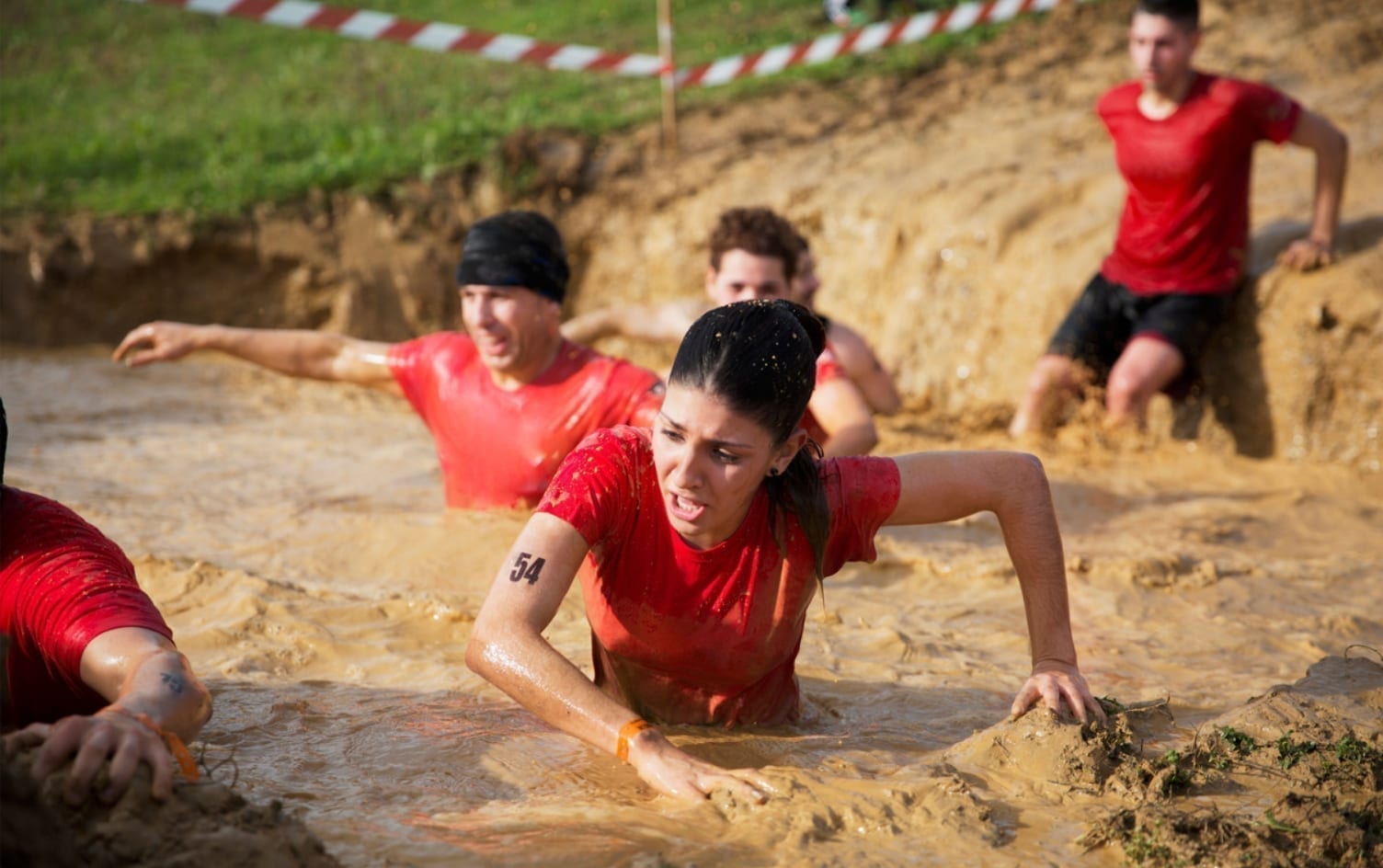Going to the gym and doing the same routine week after week gets boring quickly. It’s easy to lose motivation when you have nothing to strive for. Setting a big goal forces you out of your comfort zone and pushes you to new heights. It’s amazing what we can do when we put our minds to it.
Pick a challenge that makes you feel nervous. It might be something you need to train months for, or it might be something that you’ve been putting off because you’re not sure if you can do it. To get you started, here’s a fitness bucket list of accomplishments you can strive for:
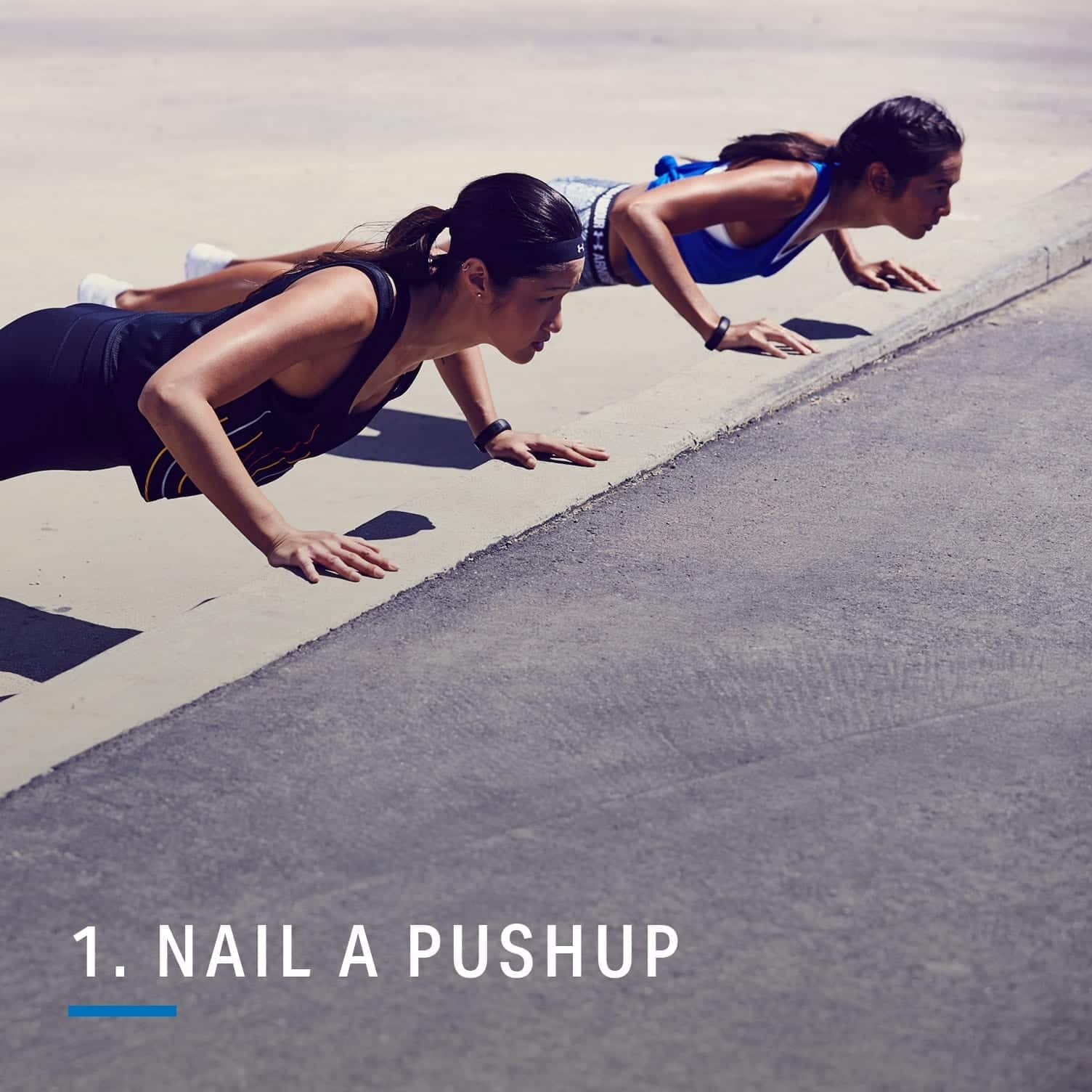
One of your first goals when you start working out should be completing one full pushup.
Starting in the pushup position with your elbows locked out, lower your body under control until your chest touches the ground. Then, press up without letting your butt sag.
If you’re not there yet, don’t worry. It’s common to lack the strength to do a strict pushup when you first start. To get better, do pushups with your hands on an elevated surface like a couch or workout bench. Then, use something lower to the ground like a box. Slowly work your way down until you’re doing them from the ground. Before you know it, you’ll be incorporating pushups into your workout routine.

Even the U.S. Marines don’t require women to do a pullup during their initial fitness assessment. Instead, they perform a flexed arm hang. Marines are some of the fittest people on the planet, but around 55% of female recruits were unable to do a pullup.
For men, the requirement is 3 pullups, which is not much higher. The fact of the matter is pullups are tough for everyone. If you’re new to fitness or have simply avoided the pullup throughout your gym visits, it’s time to face the challenge. It’s possible with a few months of committed training.
To work your way up to a pullup, use an assisted pullup machine at the gym or tie a resistance band around the bar and loop it around your foot. As you get more comfortable with the movement you can slowly remove the assistance. If you’re consistent, you’ll be able to lift your chin over the bar sooner than you think.
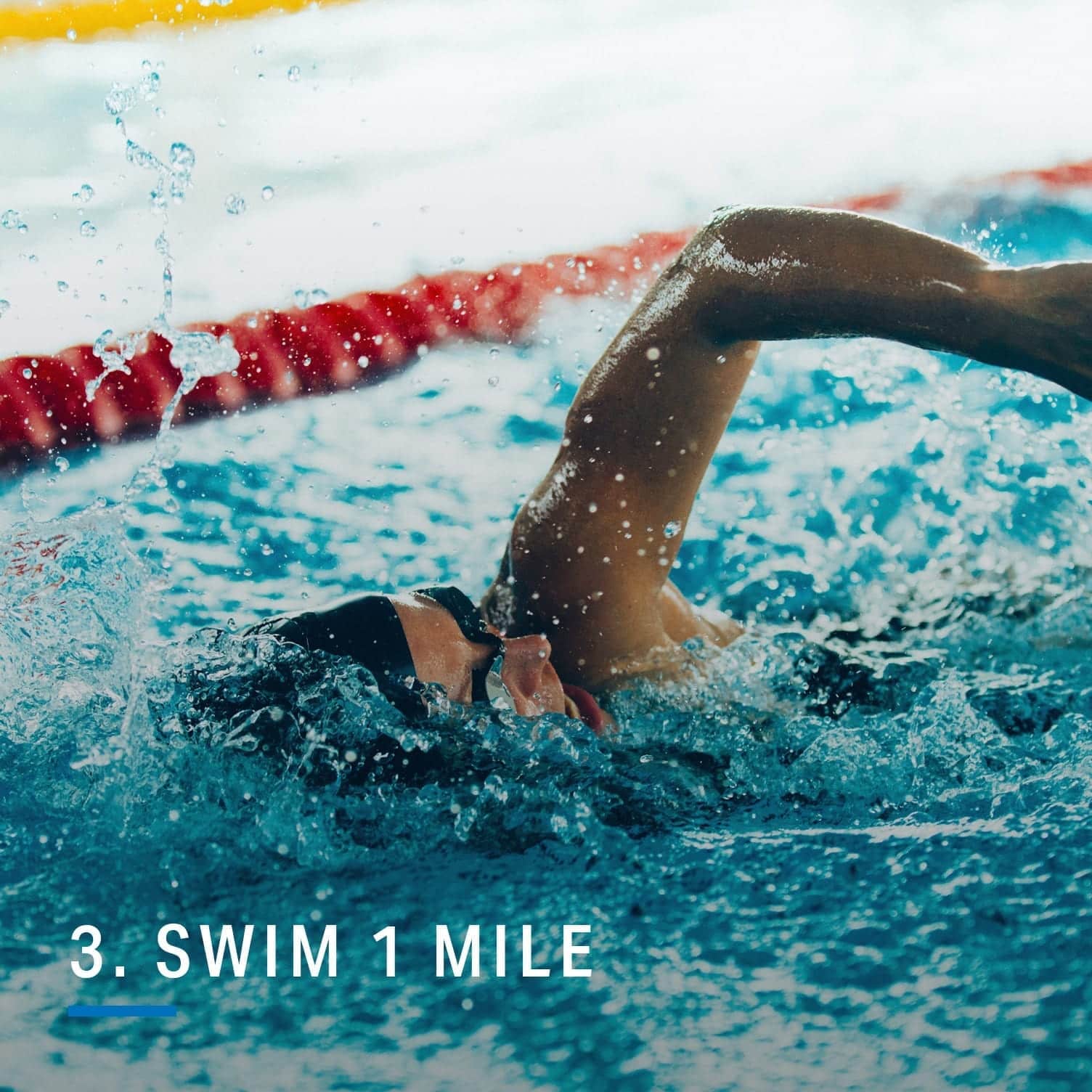
When you think of ultimate fitness challenges, the 1-mile swim probably doesn’t pop in your head. It’s not sexy. People don’t brag about their 1-mile swim time. However, it’s a grueling challenge that takes most people out of their element. Swimming is an entirely different beast from playing sports or working out on land. You have to learn proper swimming technique so you’re not exhausted. You also have to learn to regulate your breathing.
You can do the 1-mile challenge in a pool. It’s easier to measure distance that way, and you get to push off the wall every time you finish a lap. Doing the challenge in a lake or the ocean is more difficult because you can’t push off. If you decide to do it in the open water, make sure you have someone in a boat nearby who can grab you out of the water if you’re too exhausted to continue.

When you’re new to distance running, 1 mile can seem intimidating. At first, start with 5K, 10K and half-marathon runs. Once you need a bigger challenge, it’s time to step up to the ultimate test: the marathon.
Massive crowds gather at the biggest marathons every year. New York, Boston and Chicago have tens of thousands of participants and it takes hours to get everyone started. Don’t let the big crowds fool you, running a marathon isn’t a feat everyone can accomplish.
To run the standard distance of 26.2 miles, you need to train for months. If you don’t, you might not make it to the finish line. Injuries plague runners who are ill-prepared. You can suffer from shin splints and stress fractures, not to mention sore feet. Your legs will feel like lead and your lungs will burn.
Through all the discomfort, you will find that completing a marathon is an incredibly rewarding experience, as long as you’re prepared. Most marathons have fans lining the race course, cheering you on as you go. There are drink stations along the way to keep you properly hydrated and fueled. When you finally cross the finish line, you’ll feel euphoric. The months of hard training pay off.
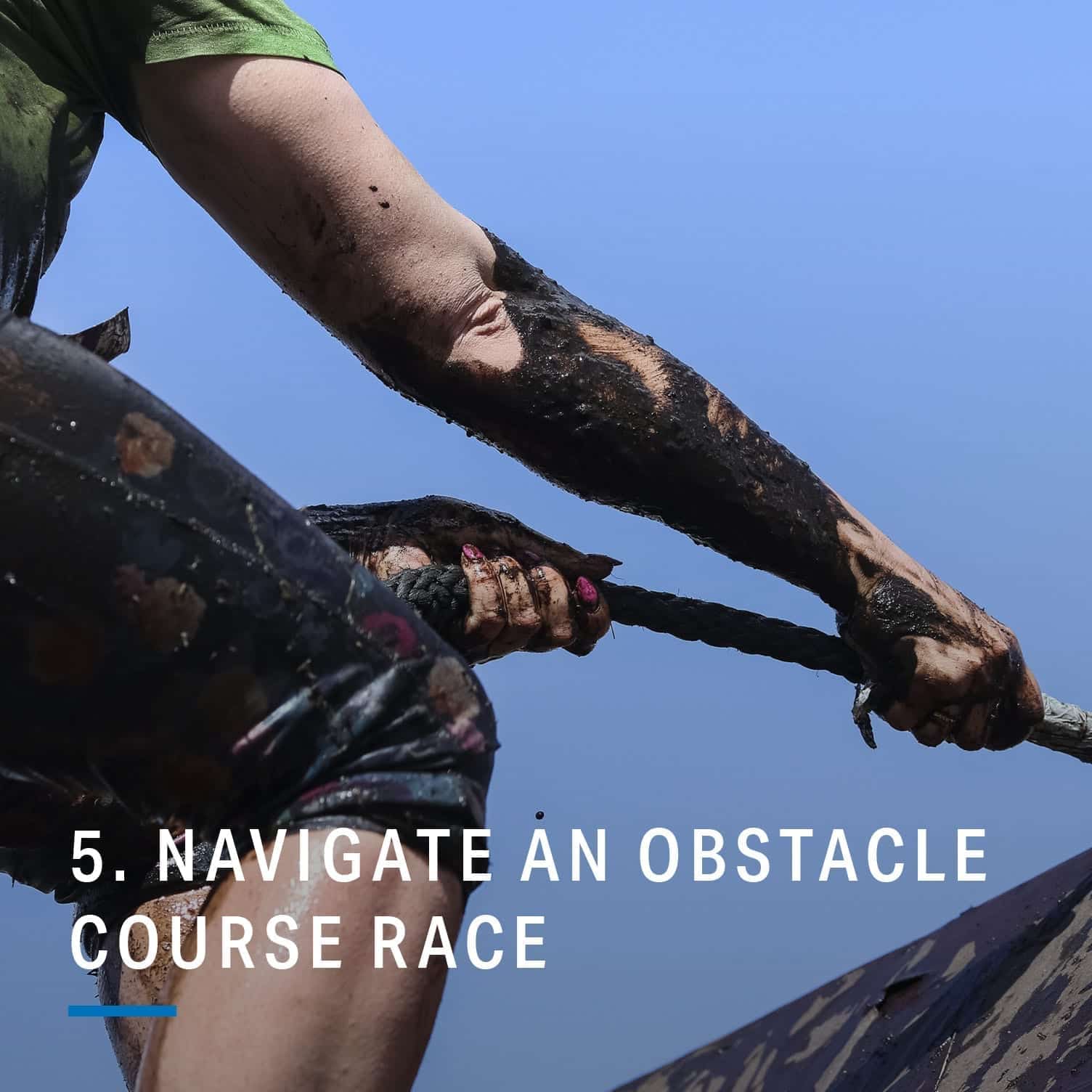
Obstacle course races are a mix of army bootcamp drills and distance running. The obstacles range from run-of-the-mill rope climbs you performed in gym class to running through fields of live electrical wires. There are a few big companies who host obstacle course races, but Tough Mudder and Spartan Race are two of the most well-known.
There are varying lengths of races. Spartan Race offers a sprint course that includes 20–23 obstacles over 3–5 miles, which means it’s packed full with challenges.
If that’s too easy for you, the Tough Mudder Classic is 10–12 miles and 25 obstacles. That’s nearly a half-marathon worth of running, with challenges along the way that require strength, coordination and overall athletic ability. If you find distance running boring, try an obstacle race.

Triathlons are an incredible test of endurance. They combine swimming, cycling and running. There are varying distances of triathlon length. You can start with a short-and-sweet sprint triathlon. The sprint isn’t a walk in the park, mind you. It starts with a half-mile swim, followed by 12.4 miles on the bike and 3.1 miles of running. You can also do an Olympic-length triathlon, which is a .93-mile swim, 24.8-mile bike and 6.2-mile run.
The Ironman is the ultimate test of fitness, and can take a full day to complete. You start with a 2.4-mile swim, then hop on your bike and ride 112 miles. After all that, you run a full marathon. It’s an achievement you can carry through your life.
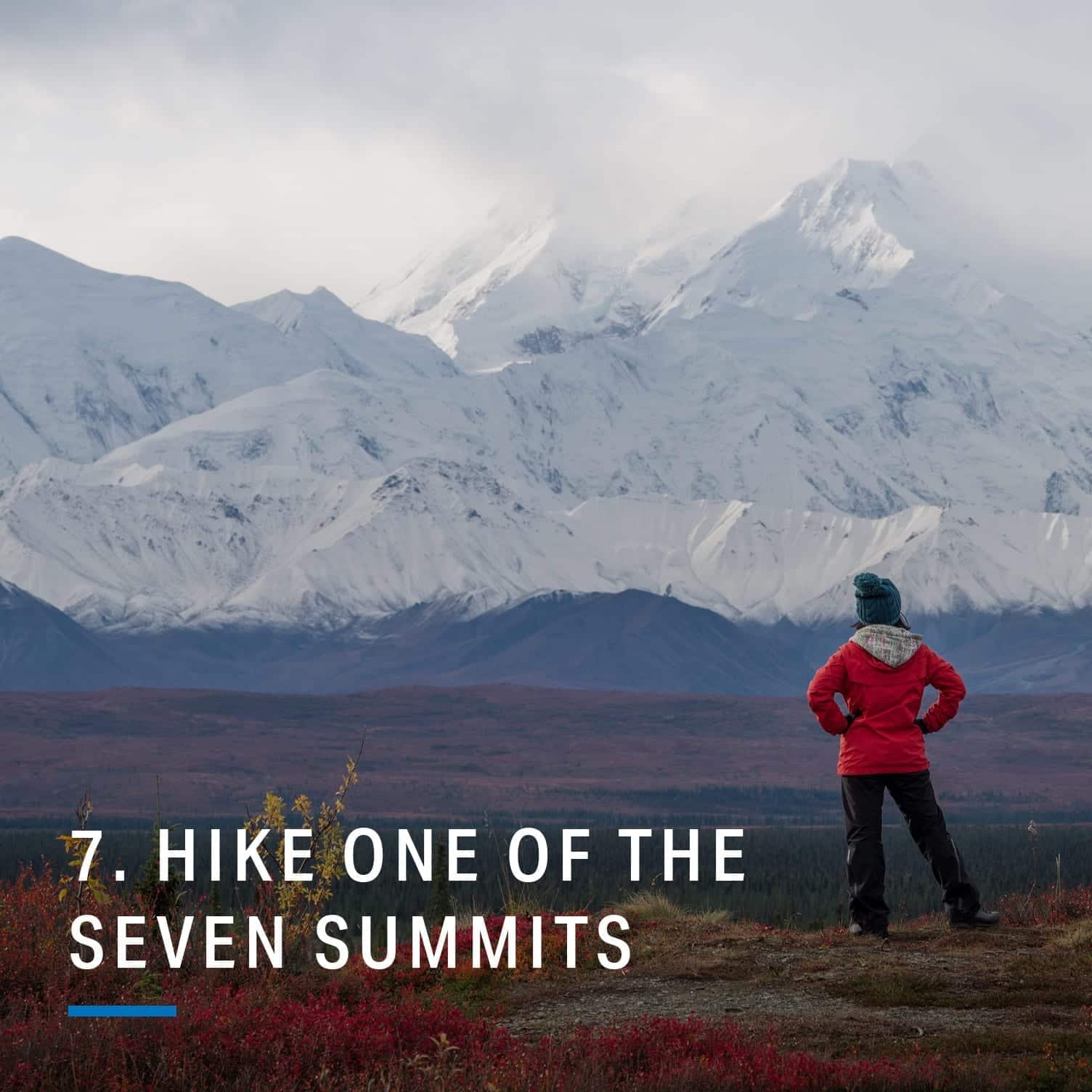
Mount Everest is the most famous of the seven summits, but not all of the mountains are as intimidating. The seven summits are the seven tallest mountains from each continent. It’s a badge of honor as a climber if you can reach the top of all seven, but climbing even one is impressive.
Besides Everest, Mt. Kilimanjaro is the most famous of the seven. In North America, Mt. Denali is the tallest peak at 20,340 feet, according to the National Parks Service. The shortest climb is in Australia at Mount Kosciuszko, but it’s still a moderately difficult hike. The easiest to climb is Mt. Kilimanjaro, so if you want to hit one of the seven summits, start there.
